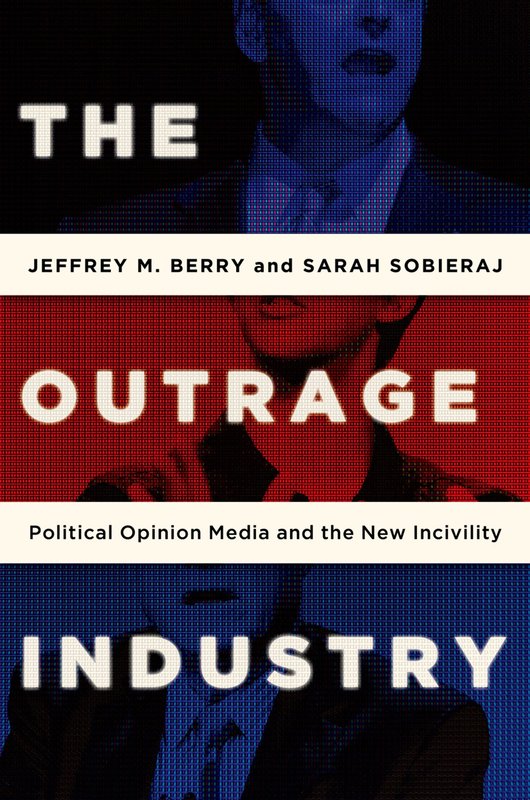What is propaganda? How can it be measured?
Definition: (Brittanica, 2021)
Propaganda is the dissemination of information—facts, arguments, rumours, half-truths, or lies—to influence public opinion.
Measurement:
To achieve measuring the propaganda attempts in their effectiveness and their relation to the public, we will use several qualitative and quantitative measurements taken from the same observances in the book “The Outrage Industry”.
In the two categories below, we find several different measurements that have to do with one side versus another without much room between, and it is important to remember that many defining measurements will still exist in a "grey" area instead of being black and white, and this is much due to the fact that every person will interpret situations and examples differently due to previous biases and their own personal experiences and circumstances.
From the Outrage Industry, measurements are taken more so from the perspective of everyday media, such as radio and television, and have yet to be utilized for the sole purpose of examining propaganda, especially political.
Qualitative:
With the qualitative measurements, they are more opinion based than something that can be counted (i.e. the quantitative measurements). Much of these measurements depend on already existing opinions of the candidate, and the degree to which trust is built with the campaign or candidate. With the 2020 election in mind, it is important to considered to polarization of topics across the board, from climate change, american jobs, and even into criminal charges for public officials. When viewing the propaganda, these qualities and the actual intended meaning of each, change with who is viewing them.
-
Language (Insulting v. Flattery):
- We see different forms of language being used. The two opposite ends of this spectrum are insults and flattery. The way that each campaign uses language can show the quality of their message, and how it should be interpreted. With insults, even if true, it is often considered more offensive, where as with flatter, it is seen more neutral or defensively. -
Slippery Slope (Positive v. Negative)
- The message of the video or propaganda can be filtered through either a positive or negative view, and when watching many capaign ads or propaganda, most fall onto slippery slopes towards the extreme, where the message is either positive or negative and there is no in between. Positive views are often part of a defensive campaign, while those that use negative slopes are often considered offensive. -
Character (Protaganist v. Antagonist)
- To understand the message more clearly, an understanding of who the character is within the propaganda is important. Realizing whether we, as the audience, are supposed to view the character in front of us as a protaganist or an antagonist will help connect it's intended message and audience. Both of these are often neutral and can be used in either an offenxive or defensive tatic. The representation and radicalization of a seemingly negative antagonist will sometimes turn into a martyr like effect with followers and voters following them. -
Exaggeration (Misrepresented or Extravagant)
- With exaggeration, there is either those who exagerate to the point of misunderstanding or lying, and those who tell the truth, but in an extravagant manner. With the misunderstanding, it is usually deemed as a defensive tatic because of the relationship between negative viewing and lying, although extravagance can happen much the same.
Quantitative:
With the quantitative measurements, there is less opinion involved, and more physical evidence that does not change with who views the propaganda, or who involves themselves with the campaign. With these, especially in the reliability and authenticity categories, there are still some differing opinions, as we have conspiracy theories and denial from groups that would view these messages. It is important to realize that some of the audience viewing these pieces will believe what is said and the message, even if it not based on facts or evidence, or from a source that is reliable.
-
Sense of Community (What does the public think? Do they follow this line of thought?)
- The community that surround each campaign and candidate differ greatly. The intended audience often differs greatly from the actual community. As will be seen, the two pieces presented differ in the public reaction, and one more than the other does well connecting with it's audience. -
Reliability (How reliable is the message that is being promoted? How will the public think of this in the long term?)
- The question of whether these different tatics work, and how they work, comes mostly from how reliable the tatics are. How often are similar styles of propaganda used and how are those examples seen years later? With the 2020 election, there is "fake news" that comes from every large media in some shape or form. Even if not supported by the larger community, does the message do well outside of its current cirucumstances? This question, even with a few months between airtime and this documentation, has changed drastically on how it has been viewwed and recieved. -
Authenticity (Is it factual to the information available to the public?)
- Although facts are debated, especially in the political realm, another deciding factor is how well the propaganda does at telling information that is available to the people. There is a fine line between conspiracy theory and exagerrated truth, and to some people this line does not exist. The authenticity of the propaganda message and understanding should lead to more people being able to recognize it's importance. -
Audience (Who is this intended for? Does it promote or demote any audience?)
- Audience is important as it shows who this message is directed towards and how it should be interpreted. The two examples that will be shown of the 2020 election have clear and dedicated audiences, albeit opposite.
